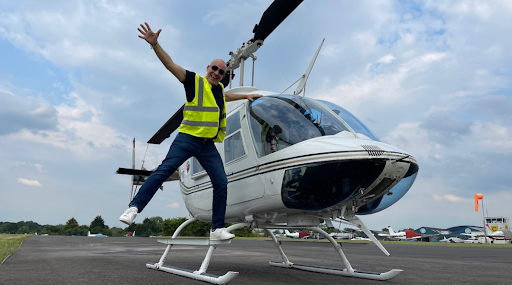Initially, operating a helicopter may appear like a task fit only for the most courageous and accomplished people. However, when the rotors spin and the aircraft takes off, the experience offers more than simply mastery over a machine or the freedom to soar over the skies. It also offers a fresh viewpoint and, shockingly, unexpectedly boosts your confidence in ways you never would have thought possible.
Here, we’ll explain the helicopter flying lessons and the psychological aspects that contribute to an increase in confidence. From understanding the mechanics of flight to mastering tough decisions under pressure, we explore the many facets of the helicopter flying experience and how they can resonate with every individual, even those who have never dreamed of flying.
The Psychology Behind the Thrust
The sensation of flying is synonymous with freedom and control. When you learn to pilot a helicopter, every move is a subtle dance between safety and daring. During your instruction, you are not just learning to operate a complex machine; you are tapped into a primal part of the human psyche.
The confidence boost is enormous because every successful flight is a testament to your ability to confront and manage fear. The experience is a perfect storm of various components — recognizing the severity of the task at hand, understanding the procedure and instructions to overcome it, and executing the plan. Accomplishing this reinforces an individual’s belief in their capabilities, affirming that even the seemingly impossible can be achieved.
Ground School: Laying the Foundation
During this phase, students often find comfort in the structure of learning. The reasons for technical malfunctions or the importance of a pre-flight checklist click into place. Ground school provides the groundwork for a safe and efficient learning process and, in the process, bolsters confidence through the acquisition of knowledge.
Simulators: Bridging the Virtual and the Real
Time spent in the simulator creates a controlled environment for error. The weightlessness of fear can be felt in the pit of your stomach as the simulated aircraft approaches a controlled crash, only to right itself at the last possible moment. The virtual becomes an important tool for risk management and serves as a quiet conductor, moulding and shaping a student into a more confident and skilled aviator.
Taking Flight: The Ultimate Confidence Builder
The day finally comes for the trainee pilot to take a seat inside a real helicopter. These days, the sensation of lightness is more than simply psychological. It is bodily. A voyage of self-discovery begins with the sound of the blades rotating.
Every pilot will tell you that taking off is an inexplicable thrill and that transitioning from flying in a simulator to an actual aircraft is akin to passing through a rite of passage. Every flight involves many spins and manoeuvres, landings and takeoffs, and—above all—communication with air traffic control.
The Solo Flight: A Personal Triumph
Perhaps the most defining moment in any pilot’s training occurs during a solo flight. This is the true test of an individual’s readiness and, essentially, a display of complete trust from the instructor. The first solo flight is a memory etched in the pilot’s mind, a moment when confidence reaches new heights, and the sky becomes a canvas.
The accomplishment of flying without an instructor’s guidance is immense. The solo flight marks the transition from student to pilot and serves as a tangible measure of capability that can be drawn upon for years to come in personal and professional life.
The Function of Interaction in the Air
Pilots are taught the value of efficient communication during flight training. When in a crisis, pilots need to be able to express their intentions quickly and precisely. During operations, clear radio commands and communications are essential.
It’s important to remember that communication skills are not just for the cockpit. Being able to articulate oneself precisely is a crucial quality of a confident person. This ability is particularly useful in everyday life, work environments, and interpersonal connections.
The Independence When Everything Is Stale
Knowing that you can manage unexpected situations in addition to day-to-day operations gives you confidence when flying. By selecting landing locations that account for the potential for engine failure, pilots are trained to be resilient and resourceful in the face of difficulty.
A pilot’s confidence is greatly bolstered by knowing that they possess the ability to safely land the aircraft in an emergency. This self-sufficiency fosters the idea that one can overcome adversity with ability and willpower.
Feedback: Learning from Each Flight
A pilot and their instructor have a debriefing after every class. It’s time to go back on the choices you made during the flight and offer constructive criticism. Reminding the pilot of their strengths and pinpointing development opportunities, the approach promotes introspection and personal development.
It is not just in aviation that debriefings are conducted. A self-assured professional can take criticism well and use it to their advantage. It is an essential ability for advancement in any career as well as for personal development.
Concluding Words: Your Ascent to the Stars
Finally, helicopter flying lessons have the potential to modify our psychology, significantly increasing our confidence levels. We become masters of ourselves when we learn to master the skies. We could never have predicted how this newfound confidence would benefit us in the long run, impacting both our personal and professional accomplishments.
It is an exciting journey to become a proficient helicopter pilot. Are you prepared to soar to new heights with your confidence in the process? You have the freedom to choose, and if you do, a world of daring possibilities can be waiting for you on the ground as well as in the air.




